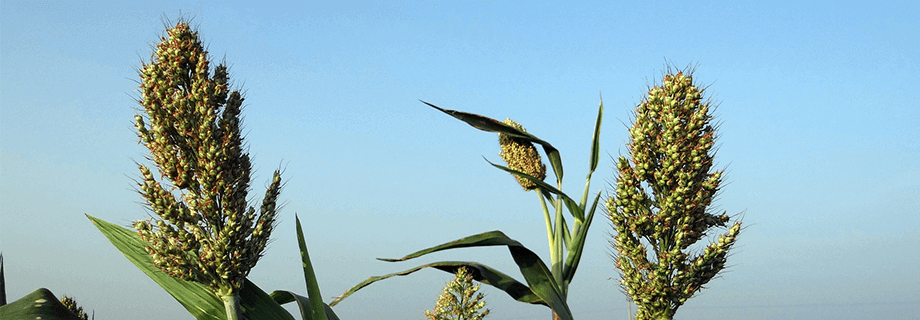“Our Future is Bright”…with Sorghum

Nigeria’s President, Goodluck Jonathan, is upbeat about the future of food production in his country, telling his compatriots “our future is bright”. He needs to be optimistic.
Nigeria spends $4 billion each year to import wheat, $2 billion on rice, $1.3 billion on sugar, and $600 million on fish imports.
Despite this, malnutrition is rife. According to UNICEF, one in every two children in the northern regions is stunted, a sure signal of malnutrition. One in five is zinc deficient, because their diets contain so little animal protein.
President Jonathan and his Minister of Agriculture, Akin Adesina, have a plan. First, they plan to STOP doing things, for example:
- Stop treating agriculture as a development project
- Stop funding isolated projects without strategic focus
- Stop government crowding out the private sector
In place, they want to implement an Agricultural Transformation Agenda, to:
- Focus on agriculture as a business
- Use the agricultural sector to create jobs, create wealth and ensure food security
- Focus on value chains where Nigeria has comparative advantage
- Develop strategic partnerships to stimulate investments
- Attract private sector agribusinesses to set up processing plants.
Rice, cassava, sorghum, cocoa and cotton have been singled out for value chain transformation.
The Sorghum Transformation Plan targets the northern regions of Nigeria, which tend to be poorer and more malnourished than the south. Because it is drought tolerant, sorghum does well in the arid North East and North West.
This year, Nigeria will grow almost 7 million tonnes of sorghum (compared to 9 million tonnes of maize). Yields are low, around 1.25 mt/ha. Sorghum hybrids can help push up yields to 4 mt/ha, and increase farmer income from $120/hectare to over $300/ha.
So what do you do with all this sorghum? For many people in Africa, sorghum = flour (for people who cannot afford wheat flour) and beer. There is little awareness that sorghum can be extruded with soybeans to make a smooth, pleasant-tasting and highly nutritious instant porridge for children and adults. Sorghum-Soy Blend is an excellent way of delivering vitamins and minerals, too.
It’s sad that sorghum tends to be regarded as poor man’s food in Africa. Over in the U.S., research teams at University of Nebraska, Kansas State University, University of Georgia, Texas A&M University and elsewhere, are spending millions of research dollars to unlock the nutritional secrets of sorghum.
Why? Anti-oxidants, principally. High-tannin sorghums, such as those grown and consumed in Africa, are very rich in anti-oxidants. A Georgia study found that “levels of polyphenolic compounds in the high-tannin sorghum varieties ranged from 23 to 62 mg of polyphenols per gram. For comparison, blueberries contain 5 mg of polyphenolics per gram, while pomegrante juice contains 2 to 3.5 mg per gram”.
Whether sorghum will make a dent in America’s bulging waistline and diet-related disease burden remains to be seen. But over in Africa, villagers in the Sorghum Belt are surrounded by super-healthy sorghum, and probably don’t even realize how nutritious it is.



